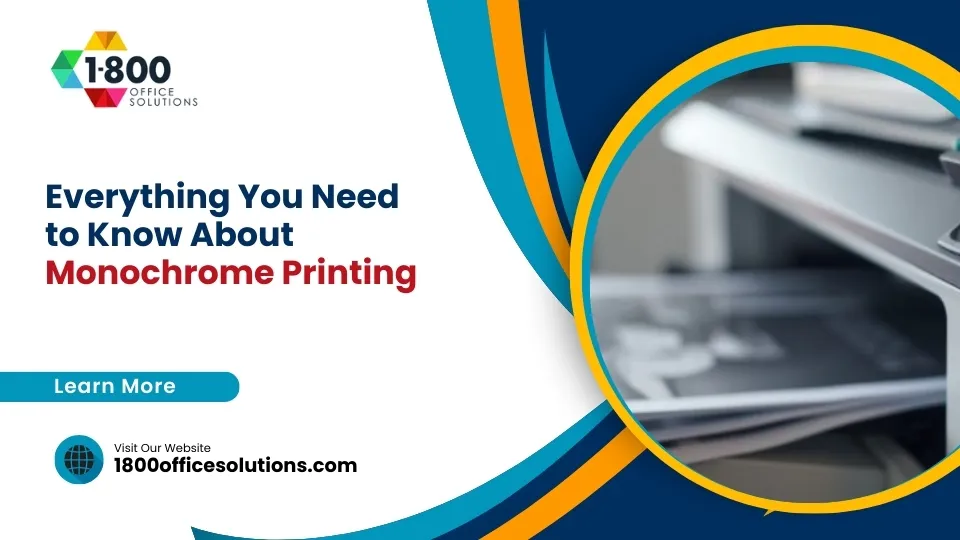Unpacking What Is Business Process Modeling for Businesses
Business Process Modeling (BPM) Overview: Streamlining OperationsAI Overview:
This article explores how Business Process Modeling (BPM) transforms inefficient operations into streamlined, data-driven workflows. It defines BPM as a structured framework for visualizing, analyzing, and improving business processes—helping organizations cut waste, enhance communication, and ensure compliance.

What Is Business Process Modeling and Why It Matters?
Are you struggling with inefficient operations and unclear procedures? This article explains business process modeling and its role in streamlining workflows. It covers key components, benefits, and practical techniques that improve daily operations. Readers will learn how refined processes increase efficiency and address operational challenges directly.
Understanding Business Process Modeling

Business process modeling explains workflow modeling by breaking down the logic behind business transformation and workflow design. This section highlights how clear process maps add value for organizations while detailing efficient methods that simplify operational tasks. It offers practical insights that improve understanding and inform better business decisions.
Defining Business Process Modeling
Business process modeling acts as a clear framework to understand and document operational workflows using a conceptual model that reduces ambiguity in process execution. Experienced professionals often rely on software tools and six sigma methodologies to create these models, ensuring that each step aligns with customer expectations and organizational standards.
This method supports the development of precise process maps that enhance decision-making and operational management. Leading office equipment suppliers apply business process modeling to streamline tasks and clarify roles, ultimately improving processes and satisfying customer needs.
The Significance of Business Process Modeling in Organizations
Organizations benefit from business process modeling as it establishes a clear system for managing control flow and integrating data management efforts. Such clarity, achieved through business process model and notation, supports usability improvements that streamline workflows and resolve operational pain points.
Business process modeling provides a reliable framework that enhances efficiency by standardizing control flow across various functions. This method, paired with advanced techniques in business process model and notation, offers actionable insights on system operations that improve usability and data management for better organizational decision-making.
Key Components of Business Process Modeling

Identifying activities and tasks, understanding process flows and interactions, and recognizing roles and responsibilities build a solid foundation. Using tools like robotic process automation and decision model and notation delivers a clear message that enhances efficiency and knowledge for smoother operations.
Identifying Activities and Tasks
Identifying activities and tasks involves breaking down complex workflows into measurable components that support process optimization, productivity, and clearer communication. Experts use tools such as activity diagram and program evaluation and review technique to pinpoint areas for improved efficiency and secure a competitive advantage in daily operations.
Businesses benefit from detailed identification of activities and tasks as it informs evaluations and strategic adjustments that impact overall productivity. Skilled professionals utilize process optimization methods alongside precise activity diagram implementations to drive successful outcomes and maintain a competitive advantage with program evaluation and review technique insights.
Understanding Process Flows and Interactions
Business process modeling often relies on defining clear process flows and interactions to improve operational clarity. Experts emphasize the importance of incorporating a high level of detail in mapping tasks, ensuring that each action complies with the established business rule and facilitates effective collaboration through integrated web service platforms.
Organizations require accurate process maps to boost operational energy and optimize workflow efficiency. Professionals organize these maps using a structured table of contents that outlines each interaction, aligning practical examples with theoretical frameworks to deliver actionable insights for continuous improvement.
Recognizing Roles and Responsibilities
Identifying and assigning roles is crucial in process modeling, and experts recommend utilizing tools like bizagi modeler to ensure every team member’s function is clearly understood. Clear orchestration of responsibilities facilitates seamless collaboration, while simulation and computing innovations offer practical insights that drive process modeling success.
Businesses adopt well-defined role frameworks to improve accountability and drive operational performance. This approach to orchestration in process modeling advances workflow clarity, enabling precise simulation and efficient computing integration that directly addresses the needs of modern organizations.
Benefits of Implementing Business Process Modeling

The process aims to enable enhanced efficiency and productivity, strengthen the supply chain, and refine data structure across operations. It offers a clear information dashboard for tracking performance while fostering enhanced communication and collaboration. The framework supports compliance and risk management, ensuring that each detailed segment addresses practical needs and organizational priorities.
Improving Efficiency and Productivity
Business process modeling drives improved efficiency by providing a clear, actionable framework that supports effective analysis and guides the use of process modelling tools. The systematic approach enables organizations to streamline workflows, fostering both community involvement and collaboration during strategic reviews.
This structured method helps teams identify bottlenecks and optimize operations with a reliable tool that reinforces consistency. Detailed process maps derived from analysis and collaboration allow professionals to implement practical solutions that directly address daily operational challenges.
Enhancing Communication and Collaboration
The structured approach of business process modeling improves communication through clear diagrams that define roles and simplify workflow interactions. By using a bpmn diagram example, professionals can better manage regulatory compliance while strengthening team experience and achieving sustainability objectives.
Clear process maps support efficient collaboration and ensure that every team member understands their responsibilities in the workflow. The use of detailed diagrams fosters proactive discussion and compliance, making regulatory compliance and sustainability attainable goals based on firsthand experience.
Supporting Compliance and Risk Management
The structured implementation of business process modeling aids compliance and risk management by utilizing a robust modeling language and unified modeling language techniques. This framework provides a clear engine for tracking and enforcing regulatory requirements through precise annotation and intuitive interface controls.
Organizations benefit from this method as it simplifies adherence to compliance mandates and reduces risk exposure across operations. Skilled practitioners use this structured approach to create detailed process maps that align with internal guidelines and external standards, ensuring continuous monitoring and improvement.
Common Techniques in Business Process Modeling

This section presents an overview of BPMN and other notations, comparing various business modeling methods. The discussion covers process orchestration techniques, the use of xml, and insights from bizagi modeller implementations. A detailed business model chart explains technique efficiency and guides readers through practical comparisons for improved understanding.
Overview of BPMN and Other Notations
The overview of BPMN and other notations provides professionals with a robust strategy for creating clear models that serve as a key symbol in business process management. This approach not only streamlines workflow design but also supports the goal of improving operational scalability in dynamic enterprises.
Industry experts rely on BPMN and alternative notations to harmonize process operations and integrate comprehensive analysis. Their expertise helps establish a methodical framework that aligns every step with both strategic aims and practical business process management, making it easier for organizations to identify precise action items.
Comparing Different Business Process Modeling Techniques
The evaluation of various business process modeling techniques shows differences in their underlying concept and approach. Experts note that some methodologies, like those defined by the object management group, offer a structured framework compared to alternatives based on business process execution language, thereby addressing operational challenges and streamlining workflow design through an effective methodology.
Industry professionals emphasize practical examples where email protected techniques drive improved precision in modeling tasks. The discussion also highlights how each model utilizes a specific methodology, reinforcing clear concepts derived from standards such as business process execution language and guidelines set by the object management group, which assists organizations in overcoming common process inefficiencies.
Real-World Applications of Business Process Modeling

Real-world applications of business process modeling are illustrated through case studies that highlight the impact of business process mapping. The discussion covers industry-specific uses in mining and artificial intelligence, emphasizing practical insights from feedback and business process automation efforts to enhance operational effectiveness.
Case Studies of Successful Business Process Modeling
Industry professionals reported a case where a refined business process brought accurate resource allocation and data integration into focus, directly strengthening functional efficiency and customer satisfaction. The case study illustrated much-needed improvements in workflow through well-mapped data channels and proper resource management, resulting in measurable performance gains.
A separate example detailed how a leading organization refined its operations by leveraging a robust business process that emphasized clear data collection and efficient task functions. Such analysis underscores the importance of managing resources effectively to boost customer satisfaction and improve overall operational productivity.
Industry-Specific Uses of Business Process Modeling
Industry-specific applications of business process modeling often streamline operations and foster innovation by integrating drag and drop tools that simplify data visualization. Experts note that utilizing clearly defined architecture and workflow diagrams can signal significant performance shifts, helping organizations shape strategies that address operational challenges directly.
In sectors like manufacturing and finance, practical examples demonstrate that refined process mapping can shape resource allocation and signal efficiency improvements. Professionals rely on tools with drag and drop features to develop models that support accurate architecture design, ensuring each operational step fosters innovation and meets specific industry needs.
Future Trends in Business Process Modeling

Emerging trends highlight increased integration of technology and automation to boost customer service and governance. Advances in the bpmn modeler and evolving practices in business process optimization pave the way for better evaluation of systems, driving operational efficiency. This section reviews these key trends and their practical impact on streamlined processes.
Integration of Technology and Automation
Business process modeling is evolving with the integration of technology and automation, thereby improving efficiency in workflow design and reducing waste. Advanced methods like idef and dynamic flowchart creation allow organizations to gain a precise understanding of process interactions, ensuring clear mapping of objectives and identifying unnecessary steps that may contribute to operational delays.
Experts emphasize the role of structured techniques in simplifying process mapping and clarifying the purpose of each object within a workflow. Automation tools not only streamline the creation of idef-based models and flowcharts but also provide actionable insights to minimize resource waste, thereby driving reliable business outcomes.
Evolving Practices in Business Process Optimization
Industry experts observe that evolving practices in business process optimization now incorporate bpmn 2.0 examples to streamline operations and provide a clear timeline for project implementation. Advanced intelligence tools offer actionable insights that align process improvements with the etom framework, ensuring that each stakeholder fully understands their role in the optimized system.
Professionals note that the integration of emerging technologies and the refinement of process mapping techniques deliver measurable benefits for organizations. This approach leverages detailed bpmn 2.0 examples and real-time intelligence to adjust timelines efficiently, guiding each stakeholder toward practical strategies that enhance overall operational performance.
Conclusion
Business process modeling provides a clear framework that enhances operational clarity and drives efficiency. It equips organizations with detailed maps to streamline workflows and assign responsibilities precisely. The method enables informed decision-making and continuous operational improvements through well-structured techniques and advanced tools. This approach proves valuable for organizations seeking to optimize resource management, mitigate risks, and achieve sustained performance.











